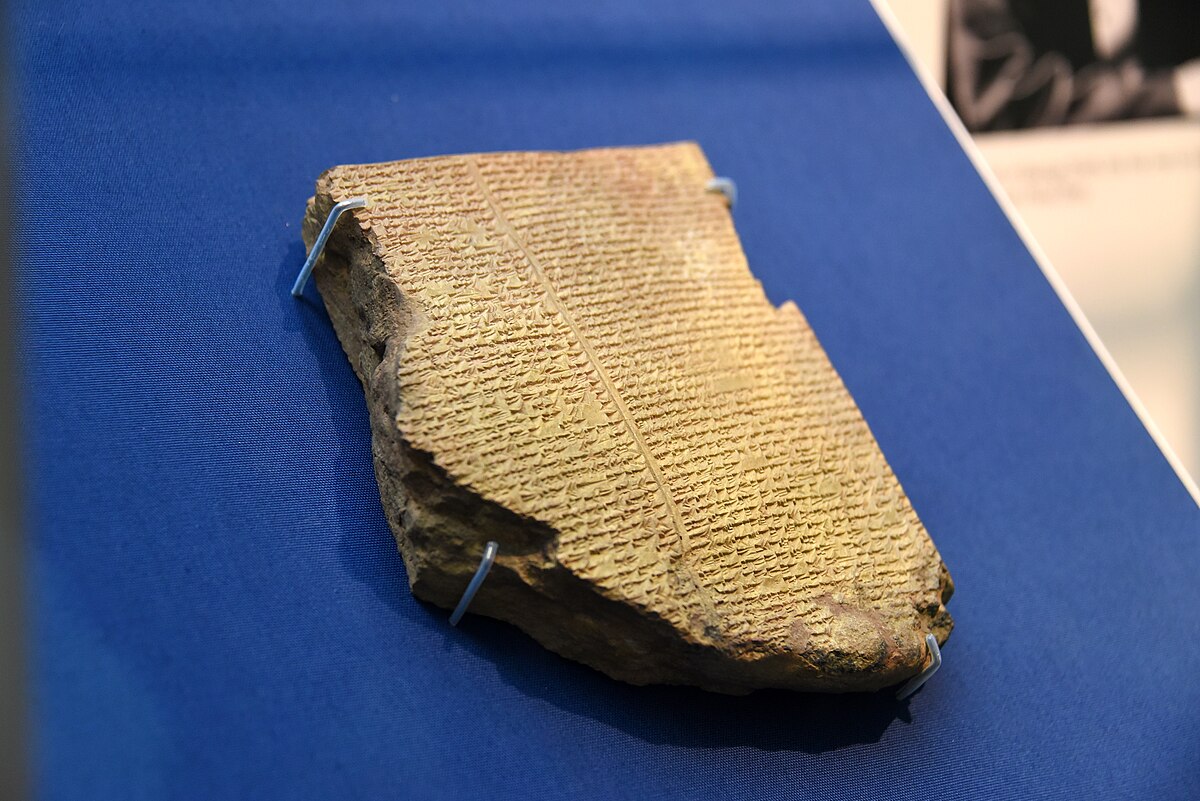Summary | Excerpt | Reading Guide | Reviews | Beyond the Book | Read-Alikes | Genres & Themes | Author Bio

A Novel
by Elif ShafakThis article relates to There Are Rivers in the Sky
 There Are Rivers in the Sky by Elif Shafak begins with the story of King Ashurbanipal (c. 685–631 BCE) of Ninevah, an ancient city on the eastern bank of the Tigris in part of what is now Mosul, Iraq. Although cruel even by the standards of his day, Ashurbanipal valued learning, and sometime around 647 BCE he built a library to house the collective knowledge of the past. At the time Ninevah was sacked in 612 BCE, the library contained thousands of cuneiform tablets.
There Are Rivers in the Sky by Elif Shafak begins with the story of King Ashurbanipal (c. 685–631 BCE) of Ninevah, an ancient city on the eastern bank of the Tigris in part of what is now Mosul, Iraq. Although cruel even by the standards of his day, Ashurbanipal valued learning, and sometime around 647 BCE he built a library to house the collective knowledge of the past. At the time Ninevah was sacked in 612 BCE, the library contained thousands of cuneiform tablets.
Cuneiform is a system of writing believed to date back to around 3500 BCE. The name comes from cuneus, the Latin for wedge, since the characters are largely comprised of wedges. It was developed by the ancient Sumerians of Mesopotamia, in southwestern Asia between the Tigris and Euphrates Rivers, but was ultimately used by many civilizations in the region.
The characters were made with a flat stylus pressed into clay tablets, which were then fired for preservation. It's thought the system was originally designed to communicate over long distances as trade increased, explaining why the earliest tablets discovered depict concrete concepts — lists of items, quantities, and prices. At first the writing was primarily pictographic, closer to drawings of the object than later representations (the pictograph for barley, for example, looked like a sheaf of barley in the earliest examples of cuneiform). In other words, it was the writing of bureaucrats.
Around 3200 BCE, scribes from the Sumerian city of Uruk significantly enhanced the writing system by replacing pictographs with phonograms (sound-based symbols). More changes took place in the following centuries. At some point, tablets were rotated 90 degrees and writing started moving right to left rather than being in columns. This made the figures easier to etch, and as this form of writing became more popular, people began to use it to record more complex concepts, like their thoughts on love and death. The original pictograph set was streamlined from over 1,000 characters to about 600.
Scribal schools were established during the Early Dynastic Period (2900–2334 BCE). The first edubbas ("Houses of the Tablet") were created for a few students in private homes, but eventually buildings were dedicated to the task. Upper-class boys — and sometimes girls — were enrolled at about the age of eight and committed to 12 years of study. They were taught not only writing, but mathematics, accounting, religion, and history.
Pupils first learned how to turn their tablets properly, since as cuneiform evolved more stone rotation was necessary to produce the required characters accurately. Once this skill was mastered, they started writing characters and sentences on the tablet. Upon reaching the level of Tetrad ("the four") they were permitted to copy simple texts, advancing to more complex works on reaching Decad ("the ten"). Once those were mastered, they could copy the most complicated texts available, eventually graduating to full-fledged scribe.
Cuneiform was replaced around 100 BCE with alphabetic writing, and the system was forgotten over time.
This changed in the 19th century. The excavation of Ashurbanipal's library, beginning in 1850, unearthed about 30,000 cuneiform tablets (when Nineveh was sacked the library was burned, but the fire only served to harden and better preserve these documents). Most were taken to the British Museum and many were translated in the ensuing years. The tablets' contents, which pre-dated the Christian Bible and included the now-famous ancient poem the Epic of Gilgamesh, radically changed the understanding of human history. The museum's current Mesopotamia exhibit can be viewed virtually through Google Street View.
Tablet XI or the Flood Tablet of the Epic of Gilgamesh, currently housed in the British Museum in London
Photo by Osama Shukir Muhammed Amin FRCP(Glasg) (CC BY-SA 4.0)
Filed under Places, Cultures & Identities
![]() This "beyond the book article" relates to There Are Rivers in the Sky. It originally ran in September 2024 and has been updated for the
August 2024 edition.
Go to magazine.
This "beyond the book article" relates to There Are Rivers in the Sky. It originally ran in September 2024 and has been updated for the
August 2024 edition.
Go to magazine.
Your guide toexceptional books
BookBrowse seeks out and recommends the best in contemporary fiction and nonfiction—books that not only engage and entertain but also deepen our understanding of ourselves and the world around us.